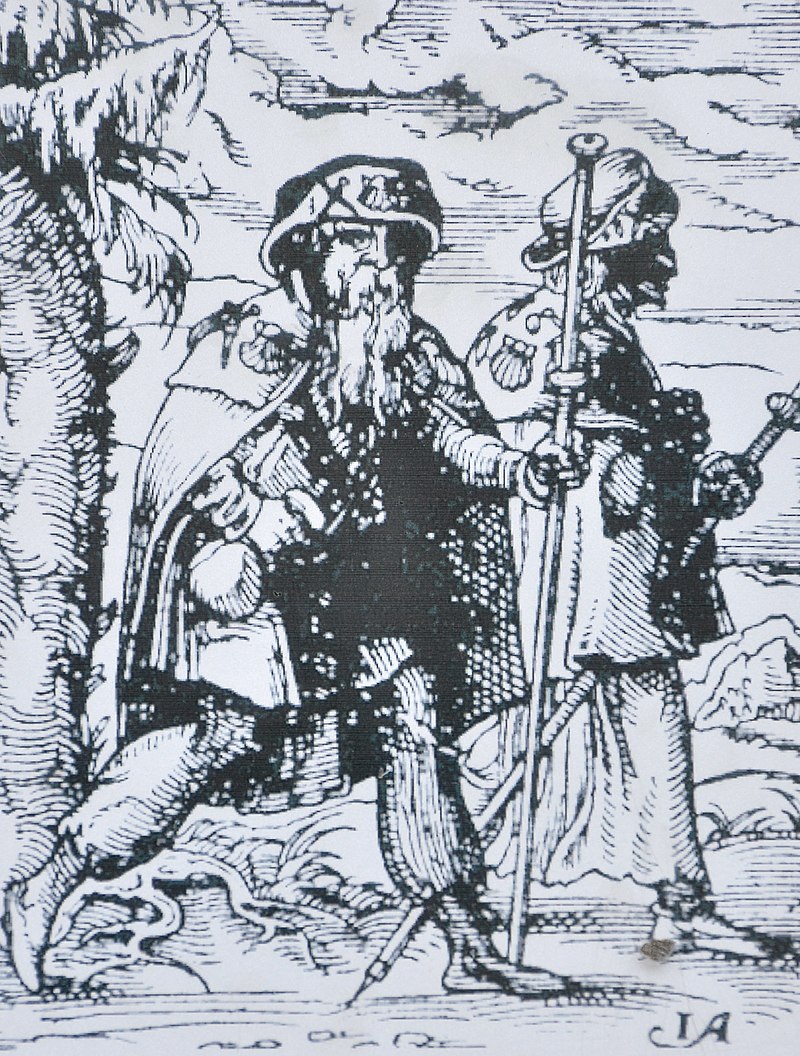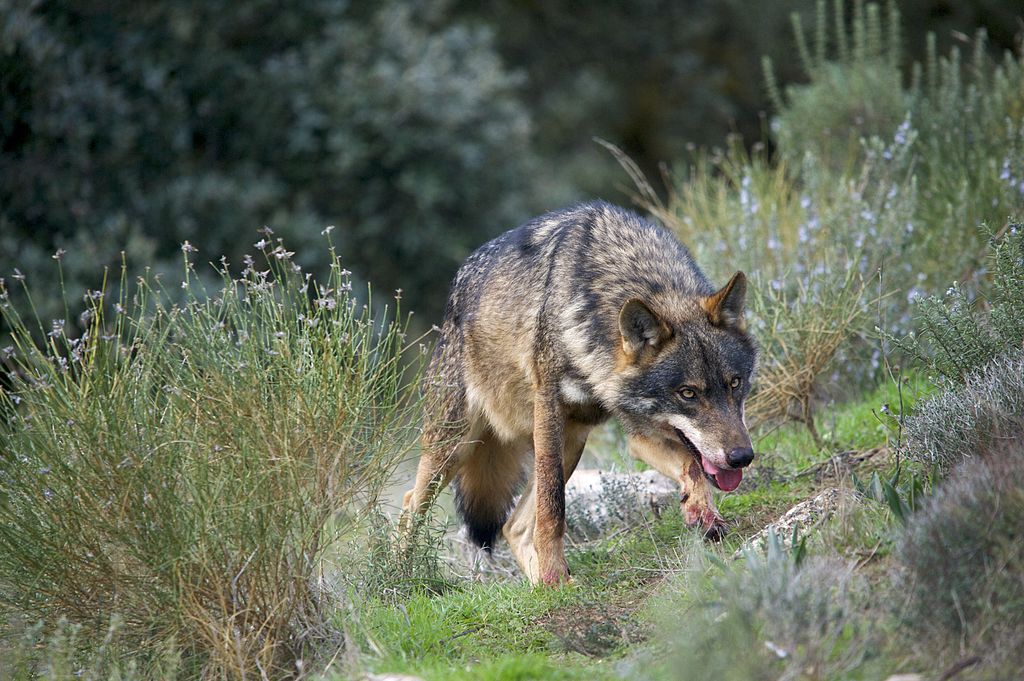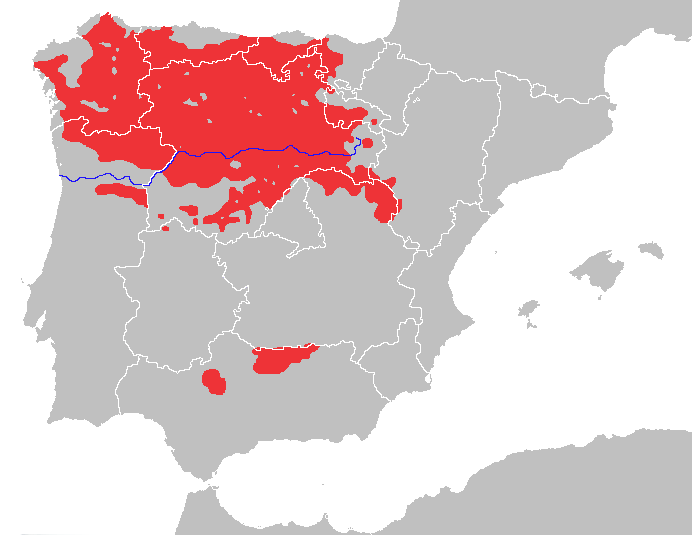I’m going east to explore Spain. (That’s where Columbus – center – started west to explore us…)
* * * *
 Within 48 hours I’ll be winging my way from Atlanta to Madrid. (As in Spain, and as indicated in Training for the Camino.) From there I’ll be taking a train to Pamplona, from whence my brother and I will hike 450 miles in 30 days, on the Camino de Santiago. Which brings up the whole “whence we came” thing. (As illustrated at right, and in the title of this post.)
Within 48 hours I’ll be winging my way from Atlanta to Madrid. (As in Spain, and as indicated in Training for the Camino.) From there I’ll be taking a train to Pamplona, from whence my brother and I will hike 450 miles in 30 days, on the Camino de Santiago. Which brings up the whole “whence we came” thing. (As illustrated at right, and in the title of this post.)
That phrase is attributed – variously – to John F. Kennedy, James Baldwin, and Jesus.
Jesus said – in the King James Version of John 8:14 – “I know whence I came, and whither I go; but ye cannot tell whence I come, and whither I go.” John F. Kennedy put it this way: “When we go back to the sea … we are going back from whence we came.” And James Baldwin said, “If you know whence you came, there are absolutely no limitations to where you can go.”

Or, as Pope (Emeritus) Benedict XVI put it:
To go on pilgrimage is not simply to visit a place to admire its treasures of nature, art or history. To go on pilgrimage really means to step out of ourselves in order to encounter God where he has revealed himself… Above all, Christians go on pilgrimage [for example] to Compostela, which, associated with the memory of Saint James, has welcomed pilgrims from throughout the world who desire to strengthen their spirit with the Apostle’s witness of faith and love.
The point of all this being that – in going to Spain – I’ll be going back to the place where the whole American Saga really began. (As illustrated in the painting at the top of the page.) That saga – the American Journey – began when one Chris Columbus met “Isabella I of Castile and Ferdinand II of Aragon.” I.e., back “whence we all came.”
Metaphorically or otherwise…
But there is one problem. In preparing for the trip, I found out that I know very little about Spain as it is today. For example, I didn’t know that Spain is now both a constitutional monarchy and a parliamentary democracy. (One of “19 full democracies in the world.”)
 I also didn’t know about the Iberian Wolf – at right – but there’s more on that later.
I also didn’t know about the Iberian Wolf – at right – but there’s more on that later.
More to the point, I didn’t have much of an idea of what kind of sections or provinces of Spain that I’d be hiking through.
But I know now – through the magic of Googling – that my portion of the 450-mile Camino-hike will go through the four most-northerly regions of Spain: Navarra, La Rioja, Castilla y Leon, and Galicia.
(My brother will be hiking further: Over the Pyrenees – from Saint-Jean-Pied-de-Port in France – and meeting up with me in Pamplona. So he’ll do 500 miles and I’ll do 450 miles. But personally I had enough mountain hiking last August. See On the Chilkoot &^%$# Trail! – Parts One and Two.)
So anyway, the capital of the first province on our mutual journey – Navarra (Navarre) – is Pamplona. This – it is said – is “a quiet and pleasant city … world-famous for the Running of Bulls which form part of its most famous festival, Sanfermines, in July.” (And as immortalized in The Sun Also Rises, the 1926 novel by American author Ernest Hemingway.)
 The La Rioja region also has one province, of the same name. The “smallest of Spain’s Autonomous Communities,” the first thing that comes to mind for La Rioja is “probably the wine bearing the same name.” (Memo to self: Do more research on this topic.)
The La Rioja region also has one province, of the same name. The “smallest of Spain’s Autonomous Communities,” the first thing that comes to mind for La Rioja is “probably the wine bearing the same name.” (Memo to self: Do more research on this topic.)
Along the Way of Saint James there are monumental towns of great beauty lined up: Calahorra, Arnedo, San Millan de la Cogolla,Santo Domingo de la Calzada, and Logroño, founded already by Romans and today the region’s capital.
The next region – Castilla y Leon – is not only the largest region of Spain, it’s also “the largest region of all the European Union.” And it’s actually two regions in one: “Castilla and Leon came together in 1983, when the regions of Castilla la Vieja and Leon were united.”
The 450-mile hike ends in Galicia, the region “known in Spain as the ‘land of the 1000 rivers.'” It has four provinces: Lugo, Ourense, Pontevedra and A Coruña. The capital of the latter province is – as we well know by now – Santiago de Compostela. And that’s the “final destination of the famous pilgimage way” and “certainly among Spain’s most beautiful cities.”
In closing this post, I’m not sure when I’ll get to do another one before I get home That is, I’m not sure how safe, secure and user-friendly are the “public” wi-fi connections in Spain.
But in the meantime, consider the following little tidbits of information:
* * * *
The region of Spain where my brother and I will be hiking…
.jpg)
The “approximate geographical range of the Iberian wolf…”

And finally, an “Alpha male Iberian wolf with blood stains in its snout:”

Just Sayin’!
* * * *
The upper image is courtesy of Spain – Wikipedia. The caption: “Christopher Columbus meets Isabella I of Castile and Ferdinand II of Aragon in the Alhambra.”
Re: “Whence.” The Kennedy-quote image is courtesy of To sail or to watch – we are going back from whence we camequotefancy.com. Kennedy made the comments at the “Dinner for the America’s Cup Crews,” on September 14, 1962. Here’s the full quote:
I really don’t know why it is that all of us are so committed to the sea, except I think it’s because in addition to the fact that the sea changes, and the light changes, and ships change, it’s because we all came from the sea. And it is an interesting biological fact that all of us have in our veins the exact same percentage of salt in our blood that exists in the ocean, and, therefore, we have salt in our blood, in our sweat, in our tears. We are tied to the ocean. And when we go back to the sea – whether it is to sail or to watch it – we are going back from whence we came.
Re: “American Journey.” See also The American Journey: A History of the United States, the text book, not to be confused with American Journey, the “six-part orchestral composition” composed by John Williams and “commissioned by U.S. President Bill Clinton to accompany a multimedia presentation titled ‘The Unfinished Journey’ directed by Steven Spielberg for the 2000 ‘Millennium‘ celebrations.”
Re: “Back ‘whence we all came.'” Yeah, I know, the Vikings Beat Columbus to America, but they didn’t stick around very long. See Norse colonization of North America – Wikipedia:
The Norse colony in Greenland lasted for almost 500 years. Continental North American settlements were small and did not develop into permanent colonies. While voyages, for example to collect timber, are likely to have occurred for some time, there is no evidence of any lasting Norse settlements on mainland North America.
Information on the “northerly regions of Spain” was gleaned from Regions of SPAIN – All about Spain.
The “wolf” image is also courtesy of the Wikipedia article on Spain. The caption, “Iberian Wolf.” The caption for that link indicates that the Iberian Wolf is “a subspecies of grey wolf that inhabits the forest and plains of northern Portugal and northwestern Spain. The 2003 census estimated the total Iberian population to be 2,000 wolves.” The article further indicated that “Iberian wolf lives in small packs. It is considered to be beneficial because it keeps the population of wild boar stable, thus allowing some respite to the endangered capercaillie populations which suffers greatly from boar predation. It also eats rabbits, roe deer, red deer, ibexes and even small carnivores and fish. In some places it eats domestic animals such as sheep and dogs.”
The “La Rioja” image is courtesy of Tourism in La Rioja (Province) in Spain | Visit La Rioja. The caption: “Wine with the La Rioja Designation of Origin © La Rioja Turismo.”
Note again that the map above – showing the “Approximate geographical range of the Iberian wolf” – roughly coincides to where I’ll be hiking. See e.g. the top map in Training for the Camino.
Also, note that the idea of Columbus starting “west to explore us” is a bit of Artistic License.
